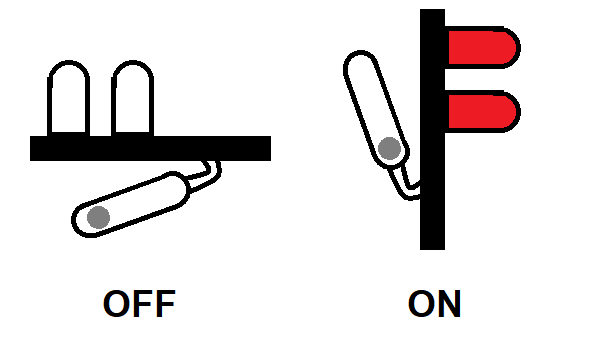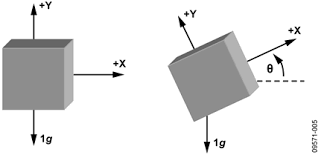Mk2 Boba Fett Range Finder
The Boba Fett Range Finder prop with lights comes in two varieties. Switched on by a microswitch in the helmet stalk, or a tilt sensor in the range finder.

Sales: https://www.etsy.com/shop/WestabyElectronics
My initial design used the latter. For shipping reasons, depending on your country, a ball or mercury tilt sensor was included with the Mk1 Range Finder.
However, I do not like either of these options. The ball can get stuck, and mercury has shipping restrictions.
Mercury Alternatives
Modern circuits use an accelerometer or gyroscope to determine the angle of tilt. An accelerometer would be an ideal solution, but it needs another chip to read the position information and determine if the lights should be on or off. More chips mean more power, more money, and more programming.
After some prototyping with accelerometers, I found that the accelerometer was a better solution.
Accelerometer
Accelerometers can determine if the range finder is up or rotated down. The best part is the new circuit can still be powered by a common CR2032 battery and have great battery life.

The trick to staying low power and low complexity is by designing the circuit with analog components. Typical accelerometers have a spi or i2c interface that needs a microcontroller to poll the position and take action. Less common, there are also analog accelerometers that output a voltage level in relationship with the position.
Here is a example voltage output when the X axis is pointed down:
X: 1.5V
Y: 1.2V
Now let’s rotate it so the Y axis is pointed down:
X: 1.2V
Y: 1.5V
So when X is down Vx > Vy, and when Y is down Vx < Vy. This logic is simple to decode and we don’t need a microcontroller to do it. We just need a logic gate with the right voltage threshold or better an opamp. So we don’t have to worry about the threshold voltage.
- When Y > X, the lights turn on.
- When Y < X, the lights turn off.

To my surprise, the prototype idle current measured at a mere 0.3mA. Wow! Compared to a tilt switch’s 0mA when off, 0.3mA is a lot. lol. That is the difference between years of battery life when off and weeks. The battery life with the lights on is about the same, 50-100 hours depending on the quality of the CR2032 battery.
To extend battery life, my Mk1 Range Finder came with a small slide switch to place the circuit in storage mode to prevent the lights from accidently coming on and draining the battery. The Mk2 design will also have an on/off switch when the range finder is not in use. Allowing a single CR2032 to last for multiple cosplay sessions.
Summary
Comparing the accelerometer to a tilt switch for range finder tilt auto-activation.
Pros:
- Accelerometer design is simple
- No mercury
- No stuck mechanical ball
- Low power / long standby battery life
- Fully solid-state tilt sensing
Cons:
- Analog accelerometers are more expensive (~$8)
- Chip shortages
- Idle battery life of weeks, not years.
You can purchase my Range Finder on etsy: https://www.etsy.com/shop/WestabyElectronics
